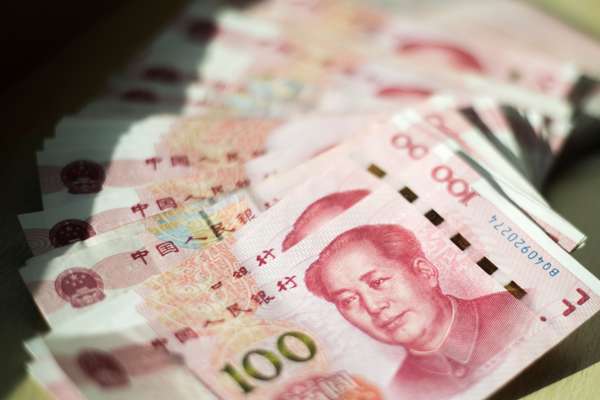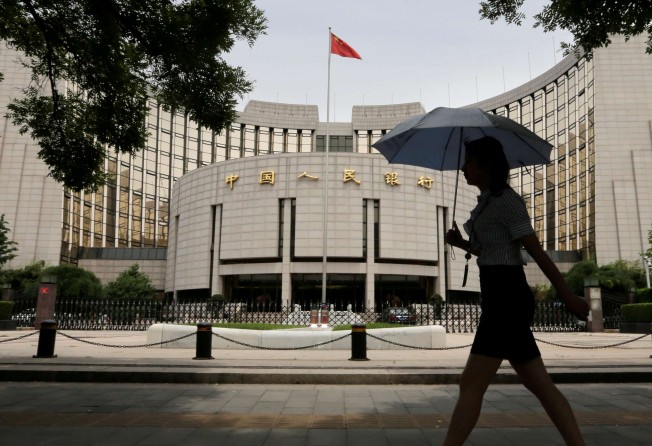
PBOC’s hands tied because of sustained capital outflows
Central bank has found itself ‘forced into’ some of its monetary tightening measures, as domestic inflation heats up and expectations increase for more Fed rate rises this year

China’s capital outflows are likely to persist for the rest of this year, which will constrain the People’s Bank of China’s (PBOC) monetary policy and lead to a more activist fiscal policy, if the government hopes to achieve its growth target, according to analysts.
“[China’s] monetary (real loan rate) and fiscal policy was the loosest in 20 years before the current NPC (National People’s Congress),” said Sean Darby, chief global equity strategist for Jefferies in a recent report, adding that’s helped fuel a housing boom and pushed the country towards achieving 6.7 per cent growth in 2016.

However, the PBOC has found itself “forced into” some of those monetary tightening measures, as domestic inflation heats up, he added.
Another important reason is the faster pace of US interest rate increases, which will lead to a wider gap in rates between China and the US, prompting capital to leave China.
“There is a limit to which capital controls can be effective in stemming outflows, particularly if real interest differentials widen,” Darby said.
Analysts from Moody’s Investors Service share his views, noting that sustained capital outflows have put the PBOC in a difficult position how to defend the yuan’s exchange rate and support growth at the same time.
“Capital outflows add challenges to the conduct of monetary policy,” said Lilian Li, a senior analyst at the ratings agency.
Between August 2016 and January 2017, foreign exchange reserves fell by around US$34 billion per month on average, according to government data.
This is because capital outflows have outstripped current account surpluses, Li said.
There is a limit to which capital controls can be effective in stemming outflows, particularly if real interest differentials widen
She expected outflows to persist during 2017, which will crimp reserves and lead to tighter domestic financing conditions.
Tight monetary conditions are usually a threat to economic growth, which is especially the case in China.
“Monetary policy has so far played a significant role in supporting robust economic expansion by keeping credit supply rising faster than nominal GDP,” Li and Diron said.
After including regional and local government bond swaps, China’s total social financing – a measure of broad credit in the financial system – increased 15.5 per cent in 2016, the latest government statistics show.
That number far-outpaced China’s nominal GDP growth of 8 per cent during the same period.
“Tighter monetary conditions will test the ability of the government to maintain robust growth, a feature that has supported China’s sovereign credit profile,” said the Moody’s analysts.
“China’s growth has been the third fastest in our rated portfolio over the last 10 years,” they added.
To maintain adequate liquidity and boost economic growth, the PBOC could resort to interest rate or reserve requirement ratio (RRR) cuts.
However, such measures will also add to depreciation pressure on the yuan.
“The PBOC has acknowledged this policy tension,” Li said.
China’s fiscal policy may become more expansionary over the coming year to pick up the slack from eroding monetary policy effectiveness
In its third quarter monetary policy report, the Chinese central bank said cutting the RRR would send potentially too strong a signal of easing and further weaken the exchange rate.
As the PBOC’s hands are tied, the Moody’s analysts said, the Chinese authorities may return to fiscal stimulus to lift the economy.
“China’s fiscal policy may become more expansionary over the coming year to pick up the slack from eroding monetary policy effectiveness,” they added.
Moody’s expected the Chinese government to run a deficit of around 3.3 to 3.5 per cent of GDP over the next few years, up from 3 per cent in 2016 and 2.4 per cent in 2015.
General government debt could increase to around 39 per cent of GDP by 2018, from 36.7 per cent in 2016, according to their forecast.
“The debt burden could further rise if SOE-related contingent liabilities start to crystallise, either directly through government support or indirectly through aid to the financial sector,” Moody’s added, “including by commercial banks and policy banks that finance SOEs.”